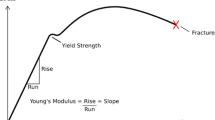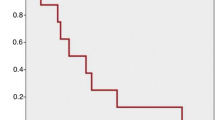Abstract
Background
Tension-free abdominal closure is a primary tenet of laparotomy. But this concept neglects the baseline tension of the abdominal wall. Ideally, abdominal closure should be tailored to restore native physiologic tension. We sought to quantify the tension needed to re-establish the linea alba in patients undergoing exploratory laparotomy.
Methods
Patients without ventral hernias undergoing laparotomy at a single institution were enrolled from December 2021 to September 2022. Patients who had undergone prior laparotomy were included. Exclusion criteria included prior incisional hernia repair, presence of an ostomy, large-volume ascites, and large intra-abdominal tumors. After laparotomy, a sterilizable tensiometer measured the quantitative tension needed to bring the fascial edge to the midline. Outcomes included the force needed to bring the fascial edge to the midline and the association of BMI, incision length, and prior lateral incisions on abdominal wall tension.
Results
This study included 86 patients, for a total of 172 measurements (right and left for each patient). Median patient BMI was 26.4 kg/m2 (IQR 22.9;31.5), and median incision length was 17.0 cm (IQR 14;20). Mean tension needed to bring the myofascial edge to the midline was 0.97 lbs. (SD 1.03). Mixed-effect multivariable regression modeling found that increasing BMI and greater incision length were associated with higher abdominal wall tension (coefficient 0.04, 95% CI [0.01,0.07]; p = 0.004, coefficient 0.04, 95% CI [0.01,0.07]; p = 0.006, respectively).
Conclusion
In patients undergoing laparotomy, the tension needed to re-establish the linea alba is approximately 1.94 lbs. A quantitative understanding of baseline abdominal wall tension may help surgeons tailor abdominal closure in complex scenarios, including ventral hernia repairs and open or burst abdomens.

Similar content being viewed by others
References
Ochsner AJ (1902) Clinical surgery. Clinical Review Publishing Company, Cleveland
Pauli EM, Rosen MJ (2013) Open ventral hernia repair with component separation. Surg Clin N Am 93:1111–1133. https://doi.org/10.1016/j.suc.2013.06.010
Zolin SJ, Rosen MJ (2021) Failure of abdominal wall closure: prevention and management. Surg Clin N Amer 101(5):875–888. https://doi.org/10.1016/j.suc.2021.07.001
Madle K, Svoboda P, Stribrny M, Novak J, Kolar P, Busch A, Kobesova A, Bitnar P (2022) Abdominal wall tension increases using dynamic neuromuscular stabilization principles in different postural positions. Musculoskelet Sci Tract. https://doi.org/10.1016/j.msksp.2022.102655
Novak J, Jacisko J, Busch A, Cerny P, Stribrny M, Kovari M, Podskalska P, Kolar P, Kobesova A (2021) Intra-abdominal pressure correlates with abdominal wall tension during clinic evaluation tests. Clin Biotech (Bristol, Avon). https://doi.org/10.1016/j.clinbiomech.2021.105426
Tenzel PL, Bilezikian J, Powers WF, Hope WW (2019) Physiologic tension: Technique for measuring and baseline values. Am Surg 85(9):998–1000
Lopez-Cano M, Garcia-Alamino JM, Antoniou SA, Bennet D, Dietz UA, Ferreira F, Fortelny RH, Hernandez-Granados P, Miserez M, Montgomery A, Morales-Conde S, Muysoms F, Pereira JA, Schwab R, Slater N, Vanlander A, Van Ramshorst GH, Berrevoet F (2018) EHS clinical guidelines on the management of the abdominal wall in the context of the open or burst abdomen. Hernia 22:921–939. https://doi.org/10.1007/s10029-018-1818-9
Hope WW, Williams ZF, Rawles JW III, Hooks WB III, Clancy TV, Eckhauser FE (2018) Rationale and technique for measuring abdominal wall tension in hernia repair. Am Surg 84(9):1446–1449
Miller BT, Ellis RC, Petro CC, Krpata DM, Prabhu AS, Beffa LRA, Huang L-C, Tu C, Rosen MJ. Quantitative tension on the abdominal wall in posterior components separation with transversus abdominis release. JAMA Surg (accepted)
Zolin SJ, Krpata DM, Petro CC, Prabhu AS, Rosenblatt S, Rosen S, Thompson R, Fafaj A, Thomas JD, Huang L-C, Rosen MJ (2022) Long-term clinical and patient-reported outcomes after transversus abdominis release with permanent synthetic mesh: a single center analysis of 1203 patients. Ann Surg. https://doi.org/10.1097/SLA.0000000000005443
Bee TK, Croce MA, Magnotti LJ, Zarzaur BL, Maish GO III, Minard G, Schroeppel TJ, Fabian TC (2008) Temporary abdominal closure techniques: a prospective randomized trial comparing polyglactin 910 mesh and vacuum-assisted closure. J Trauma 65:337–344. https://doi.org/10.1097/TA.0b013e31817fa451
Wehrle CJ, Shukla P, Miller BT, Blake KE, Prabhu AS, Petro CC et al (2023) Incisional hernia rates following midline laparotomy in the obese patient: a retrospective review. Hernia 27:557–563. https://doi.org/10.1007/s10029-022-02688-6
Acknowledgements
Thank you to Sebastian Bakalarczyk of the CCF Mechanical Prototype Department for designing, manufacturing, and assembling the tensiometers.
Funding
None.
Author information
Authors and Affiliations
Corresponding author
Ethics declarations
Disclosures
Michael J. Rosen receives salary support as medical director of the Abdominal Core Health Quality Collaborative and is a board member of Ariste Medical with stock options. Chao Tu, Benjamin T. Miller, Ryan C. Ellis, R. Matthew Walsh, Robert Simon, Daniel Joyce, Nima Almassi, Byron Lee, Samuel Haywood, Robert DeBernardo, Lindsey Beffa, and Scott R. Steele have no conflicts of interest or financial ties to disclose.
Additional information
Publisher's Note
Springer Nature remains neutral with regard to jurisdictional claims in published maps and institutional affiliations.
Rights and permissions
Springer Nature or its licensor (e.g. a society or other partner) holds exclusive rights to this article under a publishing agreement with the author(s) or other rightsholder(s); author self-archiving of the accepted manuscript version of this article is solely governed by the terms of such publishing agreement and applicable law.
About this article
Cite this article
Miller, B.T., Ellis, R.C., Walsh, R.M. et al. Physiologic tension of the abdominal wall. Surg Endosc 37, 9347–9350 (2023). https://doi.org/10.1007/s00464-023-10346-w
Received:
Accepted:
Published:
Issue Date:
DOI: https://doi.org/10.1007/s00464-023-10346-w




